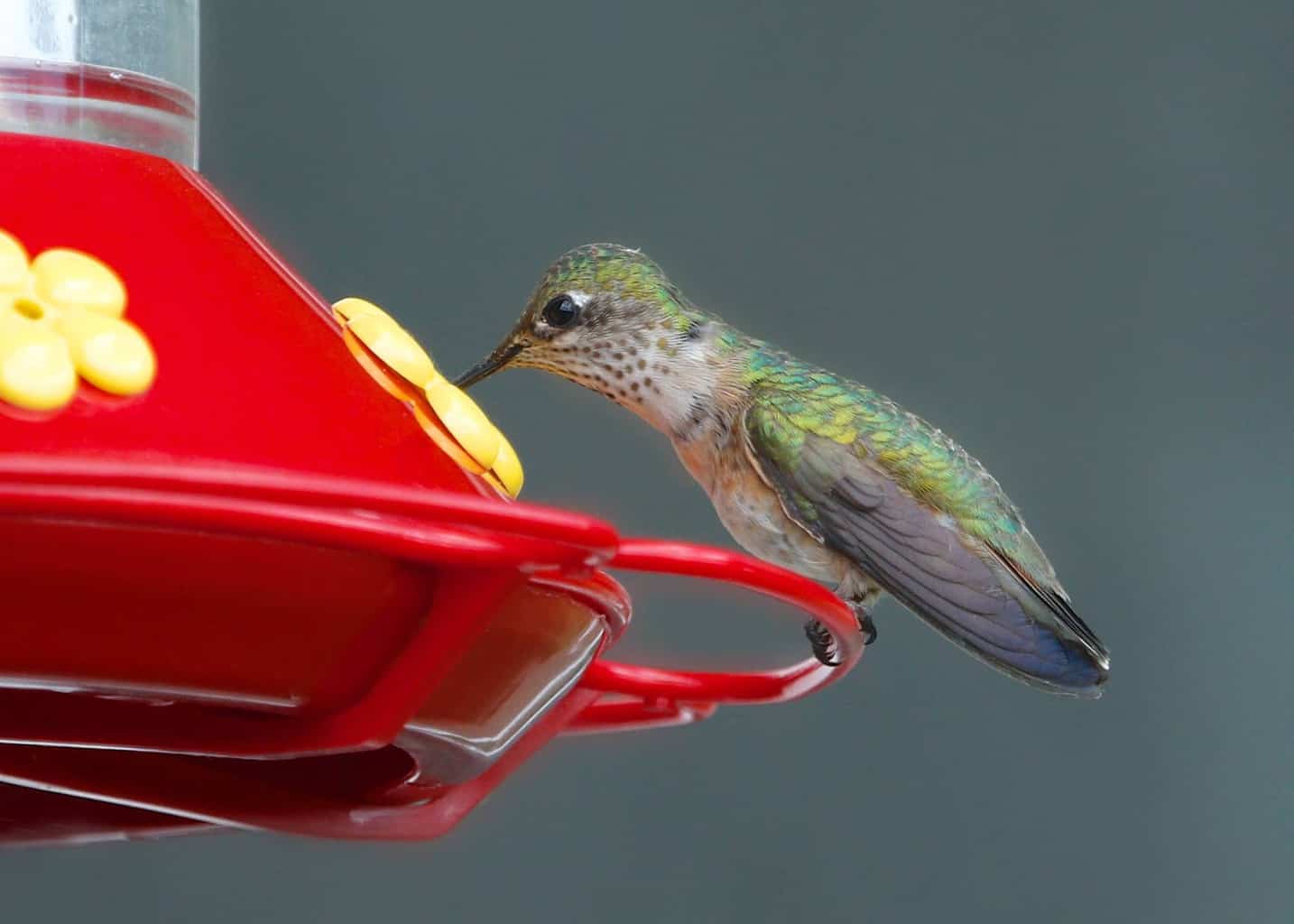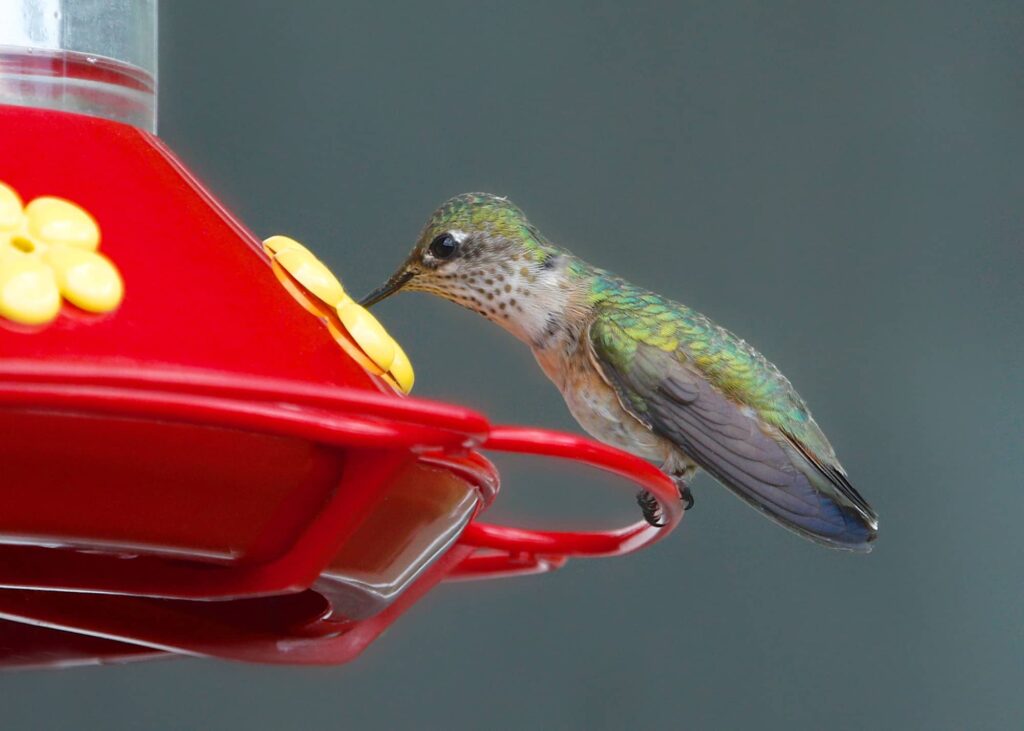Utah is a great spot for wildlife watching, and there are many great birdwatching opportunities in this state. Hummingbirds are one of the attractive birds that you can see across the state in summer.
The hummingbird season, when you may see several different hummingbird species in Utah gardens and the wilder landscapes, runs from April to August. However, some species may arrive as early as March and not depart until the fall in September or October.
Knowing when hummingbirds arrive in and leave Utah, how they behave, and what they need while in the state will help you understand how you can help these amazing birds. And now you can get the opportunity to enjoy their beauty and grace while they are in your area.
What Hummingbirds are Seen in Utah?
Black-chinned hummingbirds, broad-tailed hummingbirds, and calliope hummingbirds are commonly found in Utah through the summer months.
Though rare in Utah, Anna’s hummingbirds and Costa’s hummingbirds are occasionally found in the southwest of the state. Though the magnificent and blue-throated hummingbirds breed in the southwest, these are rarely seen in Utah and do not spend time in the state.
When Do Hummingbirds Arrive in Utah?
Hummingbirds start arriving in Utah in March. Calliope hummingbirds arrive between March and May. Costa’s hummingbirds can also arrive beginning in March, typically turning up between then and June. Rufous hummingbirds arrive in April, as do black-chinned hummingbirds – the most widespread hummingbird species in the state. You usually won’t see broad-tailed hummingbirds until they arrive on their southwards migration from around August to November.
Male hummingbirds will typically arrive first a week or two before their female counterparts to establish territory before the female hummingbirds arrive.
Timings can vary slightly from year to year, depending on the prevailing weather conditions. In a particularly cold year, they can arrive a little later. Typically, however, March/April is when you should look for the arrival of these birds in Utah.

Where Can You See Hummingbirds in Utah?
Hummingbirds can be seen at many destinations across the state. They are common near bodies of water, like Utah Lake, or Tony Grove Lake, for example.
They frequent mountainous, wilder regions and lower valleys, where you may glimpse them on nature walks and excursions, and can also be seen in parks and public green spaces in towns and cities. No matter where you live in Utah, there should be opportunities for you to see hummingbirds relatively close to home.
Of course, hummingbirds also frequent plants and feeders in people’s gardens. These birds have exceedingly good memories, and once they find good food sources, they will typically return over several years, even if they do not breed and nest in the location.
How to Prepare for the Arrival of Hummingbirds in Utah
If you would like to see hummingbirds on your property, then there are several steps that you can take to make sure that your garden is hummingbird-ready to attract them and encourage them to share your space.
Making your garden into a hummingbird haven is a great idea. You will be able to see these birds up close, see a range of other wildlife, and benefit as a gardener from the ecosystem services that wildlife provides.
Tips for a Hummingbird-friendly Utah Garden
- Choose native plants – trees, shrubs, climbers, and herbaceous perennials.
- Create dense and biodiverse planting schemes with as many different native plants as possible.
- Aim to plant species that provide nectar and attract insects – another important part of the hummingbird’s diet.
- Choose plants with long tubular flowers, especially those in shades of red, orange, yellow, or violet, which hummingbirds prefer.
- Garden organically.
- Avoid invasive species and remove these where necessary.
Some great hummingbird-attracting native Utah plants include twinberry honeysuckle, golden currant, Colorado blue columbine, piney woods geranium, various penstemons, butterfly milkweed, hummingbird trumpet, trumpet creeper, wild bergamot, and coralbells. However, there are many other native plants to choose from as you create hummingbird-friendly habitats in your garden.
Remember, how you combine your plants are also important. Consider eco-friendly and sustainable schemes in place of water-guzzling and biodiversity sapping manicured lawns. Food forests, rain gardens, and other perennial native planting schemes all provide a boon to wildlife – hummingbirds included.
Once you have created a planting scheme for hummingbirds and other wildlife, adding a hummingbird feeder allows you to go that extra mile to welcome your feathered friends.
When Should I Put Out Hummingbird Feeders in Utah?
Hummingbird feeders are not enough on their own to aid and attract hummingbirds. But in addition to planting, they can be very helpful things.
Hummingbird feeders in Utah should be placed by the beginning of March, when the first hummingbirds may begin to arrive.
When Do Hummingbirds Leave Utah?
Some species heading north on their spring migration will only pass through Utah on their way to their annual breeding and nesting locations further to the north. These birds may not stick around for long, but will often return to the site where they were born.
However, most hummingbirds that remain in Utah for the summer will leave Utah in September or October. Black-chinned hummingbirds will typically leave during these two months, as will Rufous and Costa’s hummingbirds. Broad-tailed hummingbirds will pay only a fleeting visit to the state and will typically be gone by the end of September. Calliope hummingbirds will also leave Utah by mid-late September.
These birds will make their way to their wintering grounds, usually in Mexico or further south in Central America or South America.
When Should I Take Down Hummingbird Feeders in Utah?
There is a common misconception that hummingbirds will not migrate naturally if you leave feeders out for too long, past late August.
But this is not the case. Experts agree that feeding hummingbirds does not stop migration and that you should keep your feeders out until you have not seen any hummingbirds in your garden for a couple of weeks.
No matter which hummingbirds you see in the Utah garden , it will usually be safe to take down your feeders by the early weeks of November, at the latest. However, if you live in the far southwest of the state, you may leave out feeders for Anna’s hummingbirds, which can be very occasional winter visitors.

